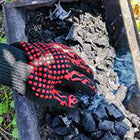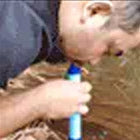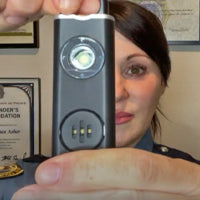Where you put your smoke detectors matters just as much as installing them. Proper placement makes sure they can detect...
Your dryer works hard, but it needs help to keep running smoothly. An easy task that makes a huge difference? Cleaning the lint trap. This small part collects lint and other debris from your clothes. If it gets clogged, your dryer won’t work efficiently.
The good news? Cleaning it is quick and easy. This guide outlines everything you need to know to keep your lint trap clear and your dryer running safely.
What is a Dryer Lint Trap?

A dryer lint trap is a simple but important part of your dryer. It catches loose lint from your clothes before it can get into the dryer vent. Every time you dry a load of laundry, tiny fabric fibers break off and get carried through the machine by warm air. The lint trap, which is usually a mesh screen, stops most of that lint from escaping into the vent system.
If the lint trap wasn’t there, lint would build up in the vent hose. This makes it harder for air to flow out. It also means longer drying times, higher energy bills, and a fire risk.
How to Clean a Dryer Lint Trap

A clogged lint trap makes your dryer less efficient. Follow these steps to keep your lint trap clean:
1. Remove the Lint Screen
Find the lint screen first. It’s usually inside the dryer door or on top of the dryer. Then, carefully pull it out. If the lint screen is stuck or difficult to remove, check for any trapped lint around the edges that may be causing the issue.
2. Remove the Lint
Use your fingers to peel off the lint. Then, toss it in the trash. If the lint is stubborn or packed in tightly, use a soft-bristle brush to loosen it before pulling it off. Never rinse the lint screen with water at this stage because wet lint is harder to remove and might build up.
3. Check for More Buildup
Sometimes, lint gets stuck in the frame or edges of the screen. Inspect the screen carefully for any remaining lint. Use a dry cloth or an old toothbrush to remove any stubborn lint.
4. Vacuum It
Use a vacuum with a crevice tool to remove any lint buildup inside the slot where the lint screen sits. Doing this improves airflow and efficiency. If you don’t have a vacuum with a crevice attachment, use a long, flexible brush designed for dryer lint removal.
5. Inspect for Damage
Check the lint screen for any signs of wear or damage while cleaning. If the mesh is torn or has holes, it won’t be able to trap lint properly. If you notice any damage, replace the lint screen with a new one as soon as possible.
6. Reinsert the Lint Screen
Slide or push the lint screen back into its slot. Make sure it’s fully in place. If the lint screen does not slide in smoothly, check for obstructions or excess lint.
7. Have a Cleaning Routine
Make it a habit to clean the lint screen after every drying cycle. Dryer sheets or fabric softeners can also leave a residue on the screen over time. Regular maintenance helps keep your dryer running smoothly and prevents lint buildup.
Keep a small brush or vacuum attachment near your dryer. Doing this lets you clean the lint trap and surrounding area without looking for your tools.
8. Monitor Your Dryer's Performance
Do your clothes take longer than usual to dry even after cleaning the lint trap? There may be additional lint buildup in the vent system. Find out how to clean your dryer vent here. We also recommend keeping a fire blanket and fire spray near your dryer in case a fire breaks out.
How Often Should the Lint Trap in a Dryer Be Cleaned?

The lint trap in a dryer should be cleaned after every load. Lint builds up fast, and the airflow gets blocked if you skip cleaning it. A clogged lint trap is also a fire hazard because lint is highly flammable. Taking a few seconds to remove the lint each time you use the dryer helps keep things running smoothly and safely. If you notice residue or buildup on the screen, give it a deeper clean every few months. But a quick clean after each load is enough for daily use.
How Do I Find My Dryer Lint Trap?

The lint trap in your dryer is usually found in one of two spots. Most front-load dryers have it inside the door opening, either along the bottom edge or on the front panel. Just open the door and look for a small handle—you can pull it up to remove the lint screen.
Some top-load dryers and older models have the lint trap on top of the machine, usually near the control panel. If this is the case, look for a small pull tab and slide it out. If you have a combo washer-dryer unit, the lint trap is usually inside the door. If you're not sure where yours is, check your user manual or look for a labeled compartment.
Is It Okay to Run a Dryer Without a Lint Trap?

No, it is not okay to run a dryer without a lint trap. The lint trap isn’t just there for convenience. It plays a crucial role in keeping your dryer working properly and preventing problems. Without it, lint and other debris can build up inside your dryer and its vent. Here’s why you should never skip the lint trap:
Increased Fire Hazard
Lint is highly flammable. Without a lint trap, it can quickly accumulate inside your dryer and vent system. When lint builds up in these areas, it can easily catch fire because of the dryer’s heat. Dryer fires spread quickly and can cause structure fires. Running your dryer without a lint trap makes this risk even greater.
Overheating
A lint trap helps air move efficiently throughout the dryer. Without it, lint can clog up the exhaust system, reduce airflow, and cause the dryer to overheat. When a dryer overheats, it might shut down and damage internal parts. In the worst cases, overheating can start an electrical or Class C fire.
Higher Energy Bills
A clogged dryer vent forces your dryer to work harder, so it uses more energy to dry clothes. If lint is freely circulating inside the machine, the drying times get longer. This not only wastes energy but also drives up your bills.
Moisture Problems
A blocked dryer can’t properly vent hot, moist air outside. This can cause excess humidity in your laundry room and other areas of your house. Over time, this trapped moisture can cause mold, mildew, and damage to your walls and ceilings.
Shorter Dryer Lifespan
A dryer that has to work harder because of poor airflow won’t last for long. The extra strain can wear down internal components, lead to frequent breakdowns, and call for costly repairs. In some cases, you have to replace the dryer sooner than expected.
How Often Should I Empty My Dryer Lint Trap?

You should empty your dryer lint trap after every load. It might not seem like a big deal, but skipping this step can cause issues. A clogged lint trap blocks airflow and makes your dryer work harder. This means higher energy bills and unnecessary wear on your machine.
More importantly, lint is highly flammable. If too much builds up, your house is at a higher risk of fire. Dryers generate a lot of heat, and trapped lint can ignite if airflow is restricted.
Make it a habit to clear the lint trap after each load so your dryer runs efficiently. It only takes a few seconds but can save you from bigger problems later.
What Happens if You Run a Dryer Without a Lint Trap?

Running a dryer without a lint trap is a bad idea. Without it, lint has nowhere to go and will build up inside the dryer, vents, and exhaust system. This can clog airflow, make your dryer less efficient, and increase your electricity bill. Skipping the lint trap might not seem like a big deal, but it can cause serious problems. Always make sure it's in place before using your dryer.
Why Is My Dryer Lint Trap Always Full?

Your dryer lint trap is always full likely because of how you wash your clothes. Using a longer wash cycle than necessary, overloading the washer, or using too much water can cause extra lint to shed. When clothes rub against each other for too long, more fabric fibers break loose, which means more lint.
Heavy loads can also lead to excessive lint because there’s less room for water to rinse away loose fibers. Reduce lint buildup by using the right cycle length, avoiding overloading, and adjusting water levels based on the load size.
Conclusion
Keeping your dryer lint trap clean is a simple but important step in keeping your dryer in top shape. A clogged lint trap can lead to longer drying times, higher energy bills, and fire hazards. Taking a few seconds to clean it after every load helps prevent these issues. Make it a habit, and your dryer (plus your wallet) will thank you!
Do you want reliable, easy-to-use, and affordable tools to put out dryer fires before they spread? Check out Prepared Hero’s fire prevention tools here, and get up to 51% off on certain items. Stay prepared, hero!


 Fire
Fire Safety
Safety Survival
Survival Protection
Protection New
New
 Fire
Fire Safety
Safety Survival
Survival Protection
Protection New
New












